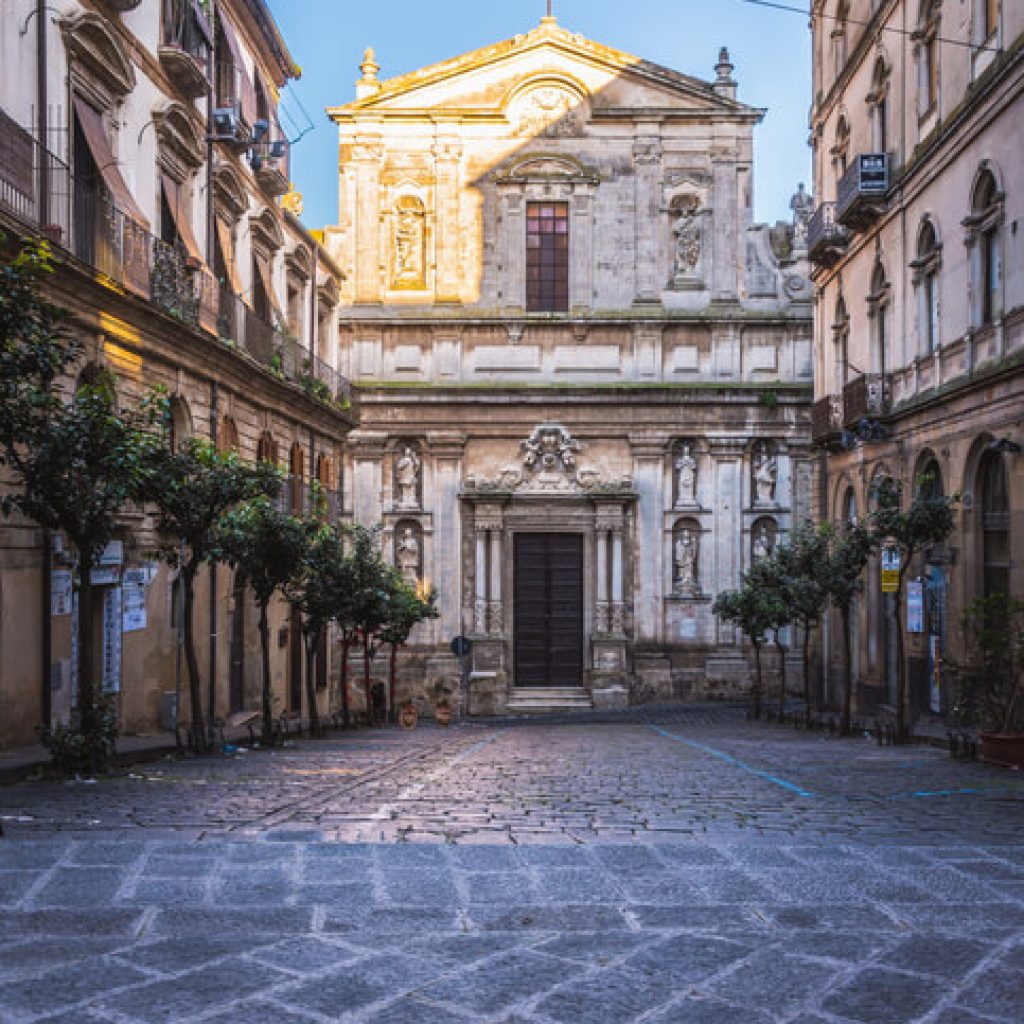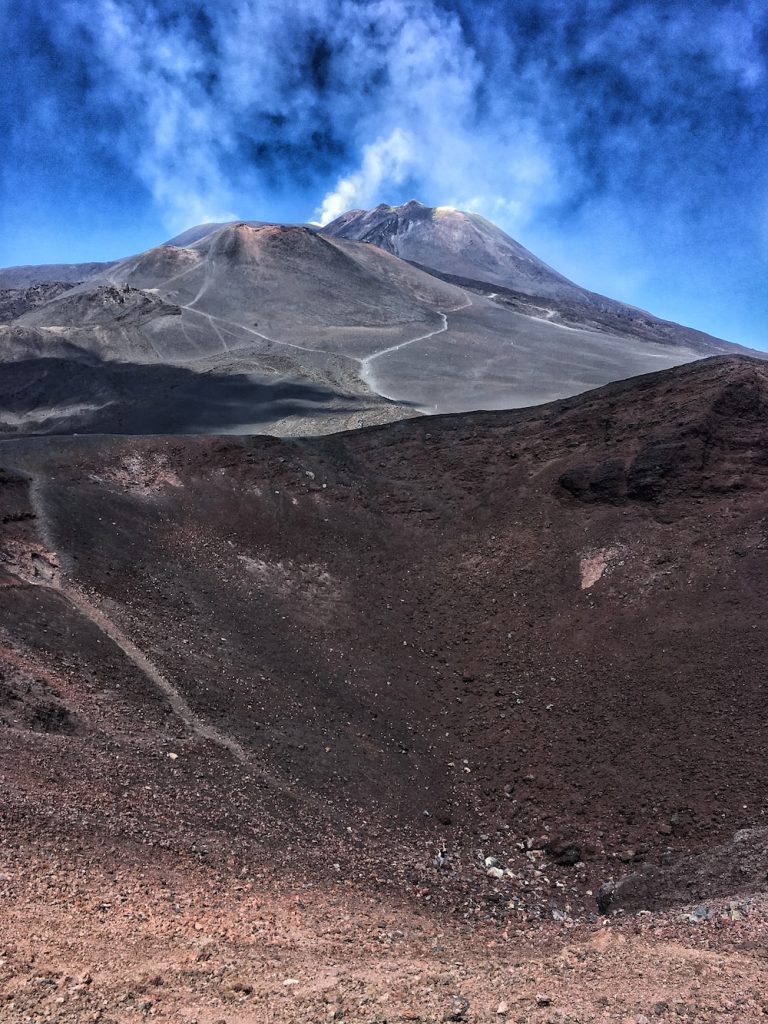Catania
Catania is located on Sicily’s east coast at the base of an active volcano. When people think of Catania, they think of the volcano, Mt Etna. Over the centuries, they have lived and thrived around the volcano. Catania is considered the tenth largest city in Italy and is the second largest city in Sicily. Being located right next to a volcano has its upsides and downsides. In Mt. Etna’s case, the advantage is fertile soils. Nowadays, people can rely on modern volcano and earthquake monitoring technology enabling them to live peacefully.
FUN ACTIVITIES
Catania’s street foods
Helping you celebrate the joy of food in Catania!
Do not underestimate the street foods of Catania because there are many dishes that you can try with amazing background stories or history for you to experience the culture of the city.
How lucky we are that all the delicious food is easily available with just an extension of the hand to us. Imagine how convenient it is for us living in the modern days unlike in the ancient days when foods do not have easy access to.
Etna Jeep Tour
Experience riding the jeep and exploring the jeep routes of Mount Etna to appreciate the nature of Etna Park Reserve with an altitude of 2000 meters starting from the place flows.
The Blessing Bread
A blessing bread is a traditional treat bread baked only during Saint Agatha’s feast day. This bread symbolizes the bread of protection for the people. But unlike any traditional bread where you can eat, this bread is a lot different. Instead of eating it, you will take the bread home, keep it safe at the comfort of your home and they believe that it will help you to protect or give you protection from fire and any other calamities.
University of Catania
The University of Catania or in Italian, Universita Degli Studi Di Catania. It is the oldest university in Sicily that is located in Catania. It is founded in 1434 and for that reason, it is the 13th oldest university in Italy and the 29th oldest university in the world. It is a privilege to experience and be part of this Catania culture to learn and love their beliefs.
Teatro Romano
A precious piece of ancient destination in Roman Catania. It is an open-air amphitheater preserved in its classical style for three hundred B.C. with the capacity of 7000 spectators watching. The view from this Teatro is an unexplainable feeling because of its history and as of today, it is partially submerged with water coming from the Amenano river.
Palazzo Biscari
A representation of an extraordinary Catanese baroque architecture. This is the most important palace in the city with a rococo-style interior décor with eye-catching decorations, furniture, stylish crystal chandeliers, and more.
There are many best daily food selections of street foods by the locals of Catania. With the quality and authenticity of the recipe. This is a great way to experience food, especially for those who are passionate about food and also curious travelers who love to explore everything.

History of Catania
Chalcidian Greeks founded Catania in the 8th Century BC. Chalcidian settlers from nearby Naxos along the coast occupied the ancient village of Katane at around 729 BC. The native population was rapidly Hellenised and under a leader named Eurachos, the Chalcidian colony of Katánē was created. Five years after Syracuse or 730 BC, slightly later than Leontini it came into existence as stated by Thucydides.
In 476 BC, original inhabitants were replaced by Hieron of Syracuse with 10,000 of his subjects consisting of Syracusans and Peloponnesians. Before proclaiming himself the founder of the new city he changed the city’s name to Αἴτνη (Aítnē, Aetna or Ætna), after the nearby Mount Etna. He received heroic honors from the citizens of his new colony and was celebrated by Pindar after his death.
After the death of Hieron and the expulsion of newly settled inhabitants during 461 BC, the old Chalcidic residents returned to the city. For Sicilian cities, in general, the period that followed appears to have been one of great prosperity for Catania.
In 415 BC, Catania allied with the Athenians and continued to Syracuse. The alliance was formed when Athenian leader Alcibiades made a famous speech in front of the assembly and became the headquarters of the Athenian army for the first year of the expedition
Culture Experience in Catania
Liotru, the city of Catania’s symbol. It is the shape and image of an elephant that has a belief and was known during ancient times as a symbol of good luck.
Mount Etna
Mount Etna is an active volcano of Catania. In history, during the days of 121 B.C., the most serious eruptions of Mount Erna that alarmed the City people with anxiety, fear, and devastation happened. The eruption was filled with streams of lava that can evaporate everything that comes in its ways and also falling hot ashes like rain that destroyed every roof of the houses, breaking it slowly.
It is the highest active volcano in Europe which people can visit, unlike other active volcanos that are restricted for tourists. You can enjoy nature and what it can give to you, then visit old craters and see the caves where the lava flows. While enjoying and taking in the breathtaking views of the mountain, try to taste the local products too.
Arancini
Arancini is the city’s most iconic food. Arancini is an Italian rice ball stuffed and coated with bread crumbs. It is traditional to try this whenever you visit Catania because it was originated in the 10th century. This is the finger food that gained popularity and can be found all year round at most civilian outlets of foods. The ancient port city of Catania offers numerous activities for both tourists and locals. The towering volcano, Mt. Etna, and the coastal aspect of the city make it a great venue for different kinds of activities, from trekking the volcano and the mountainside to enjoying water activities on the nearby coast. The city also has a plethora of historic sites with cultural experiences you don’t want to miss.

